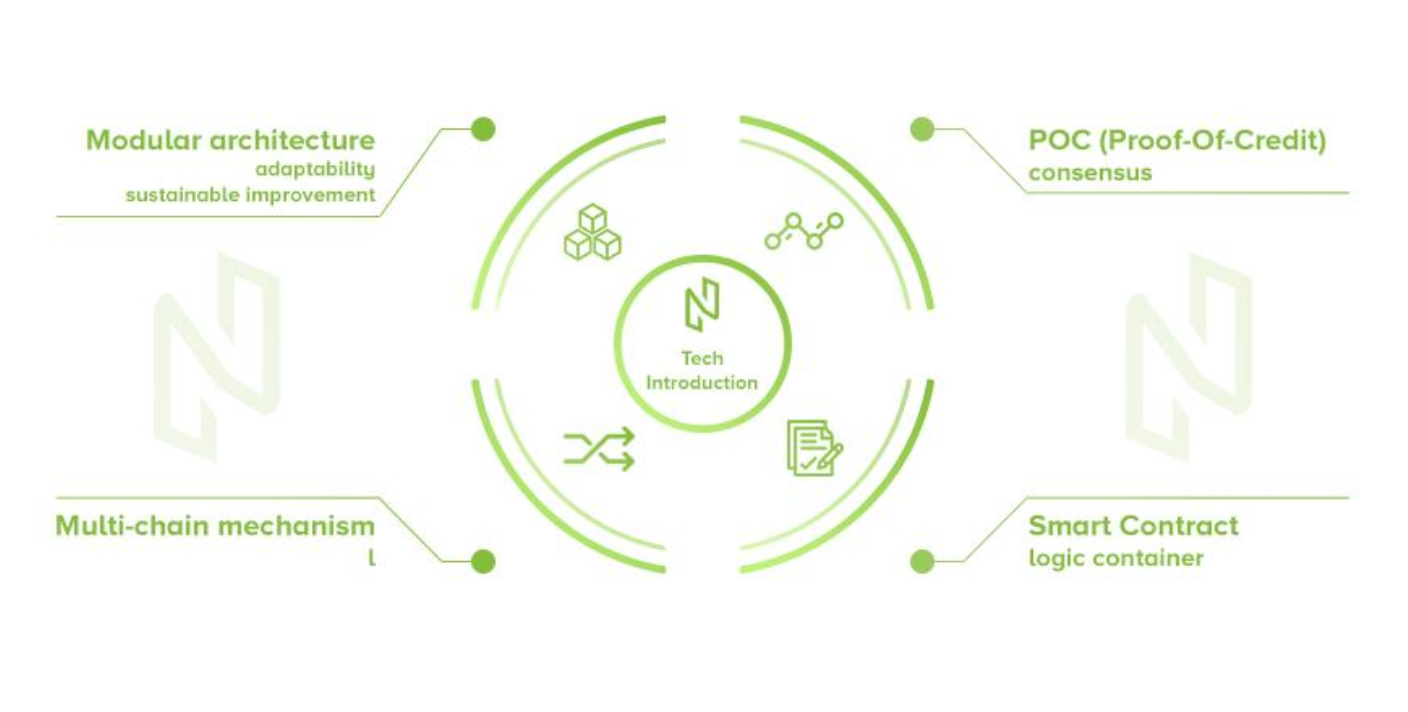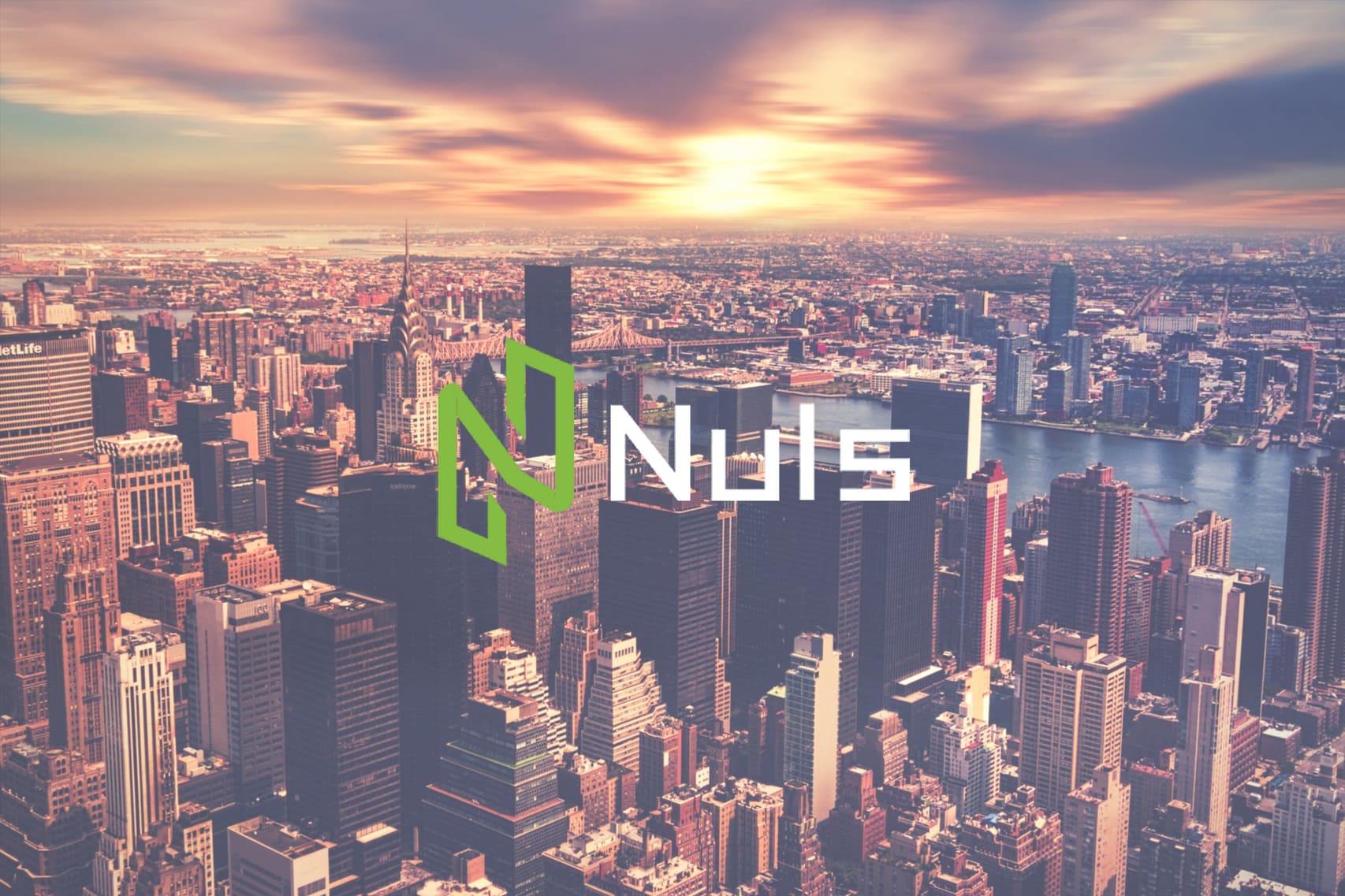NULs promotional text often repeats the phrase that “NULs is nothing, NULs is anything,” which means that as an open source project, it is flexible about being applied to any use case, and where exactly it goes is up to the community that develops and uses it.
So, NULs is “nothing” in that it has no prescribed niche market or specific aim in mind, and NULs is “anything” in that you can potentially build off it to do anything that you’ve ever heard that a blockchain can do.
What Does NULs Do?
Similar to how the ERC-20 standard allows people to create tokens on the Ethereum blockchain, NULs has a concept of “sub-chains,” where developers can spin off their own blockchains, effectively sandboxing their individual chains from each other.
The NULs blockchain is thus a platform for creating any kind of blockchain and token that one desires. This can be used for companies looking for proprietary solutions to their specific niche markets.
NULs proposes a development model similar to Linux kernel development. Aspects of blockchain development have been broken into modules, such as smart contracts, storage, ledger, consensus, processing, and network.
The NULs team provides tool sets for each module so that developers can easily start building functions and contribute code without being obligated to learn the overall code base.
This modular approach is targeted at solving a problem that many cryptocurrencies both new and established have to contend with, which is fostering developer resources. Blockchain technology is relatively new and more recently popular, and combined with the fact that cryptocurrencies have become highly profitable qualified committed developers have become a scarce resource in the current environment.
Open sourcing code is certainly not new in cryptocurrency, and ideologically many, if not most, people in the cryptocurrency world insist a project be open-source in order to validate claims of security and transparency.
In reality, though, this often means that companies take the code written by in-house developers and post it to Github to maintain legitimacy. Those same companies would be thrilled to have outside developers contributing code and checking work, but in-house development can’t help but be done with in-house decision-making, and it is hard to coordinate that with the outside world and foster a sense of inclusion in a broader community.
By turning their focus outward and making community contribution foundational to how NULs is developed, the NULs team hopes to create a sense of belonging in a large pool of developers who may or may not contribute a full time employee’s amount of code on an individual basis — but added together, the community might conceivably get even more done.

The NULs Proof-of-Credit System
One thing that makes NULs different from other blockchains, though, is their Proof-of-Credit consensus mechanism.
Proof-of-Stake is a system where blocks are verified not by miners, but by people who commit a certain amount of tokens to be held effectively in escrow, which is their “stake.” This buys them the right to confirm transactions and earn rewards for doing so.
The advantage of this system is that by reducing competition for computing power since it’s not the number of CPUs that matter so much as the amount of tokens held, the energy costs of running the network go down.
Also, in theory, it economically reduces the incentive to use one’s position as someone confirming transactions in order to attack the network because such attacks would devalue the very tokens one has committed in order to have any control.
However, Proof-of-Stake consensus mechanisms require a methodology for removing bad actors who might try and use their position as stakeholders to act against the network.
For this purpose, NULs has developed what they refer to as the Proof-of-Credit system. Credit is built by successfully confirming blocks, and having a higher credit score means one receives more reward for the work they do. Credit can also be taken away, though, which means assets can be frozen and the right to confirm blocks can be revoked for a period of time.
NULs has two penalty levels, which they refer to as yellow card and red card. A yellow card is when someone negatively affects the network, but did so unintentionally. A faulty CPU, a broken network connection, or any other mishap will result in a yellow card that will mean one’s coins are frozen for a proposed period of about 72 hours.
A red card is for verifiably malicious behaviour, such as attempting to double spend, and this will result in coins being frozen for a month. Both result in a reduced credit score, meaning that profits from validating future blocks will be reduced.
History of NULs
The NULs token, NULS, was initially created as an ERC-20 token, but there was no ICO. Instead they airdropped 40 million tokens into the Binance exchange in November 2017. When they became tradeable in the middle of December, their price started at US$1 per token and overall has risen to a current price of about US$2.60.
Not clearly outlined on their website, at least not in any English documentation, is their connection to Elephant Alliance, a Chinese conglomerate of over 75 different companies which are not brand names known at all in the west, but seem to have sizeable operations in Asia.
NULs also seems to have a shared history with another Chinese blockchain company called Inchain which is primarily focused on using blockchain technology as a method of anti-counterfeiting in conjunction with the Internet of Things.
With source information in Chinese and much of the English documentation on the matter translated from Chinese, the exact relationships are a little unclear, but what is certain is that NULs did not emerge without backing and a network of business partnerships to help provide use cases and potential future opportunities.
The NULs Team
The NULs team, based mostly out of China, looks much more like a high-tech startup than a lot of other cryptocurrency ventures. The difference is that many teams emphasize their financial advisors and partnerships with established blockchain related brands, whereas the NULs team is all about developers and community managers.
5 of their 11 listed members are positioned as community leaders, which reflects their open-source model. A successful open-source project requires a lot of work to coax a broader community of developers to go towards a unified goal, which is no easy task.
Competitors and Challenges
NULs is competing in the same space as other blockchain services that attempt to create a framework for building custom applications. Such chains are EOS, NEO, and Lisk, and more, not to mention the grandfather of smart contracts, Ethereum.
Each of the blockchain technologies competing in offering custom blockchain solutions to suit individual corporate or organizational needs offers differences in technological approaches.
However, with the whole crypto market being barely a few years old and specific blockchains only coming into the market within less than a year, there just hasn’t been time to stress test the nuances that differentiate them.
The most optimistic viewpoint on the matter is that the market for custom blockchain solutions is so large that there is room for more than one winner. With its seemingly deep connections in China and possibly the broader Asian market, NULs could do quite well, possibly becoming one of the largest, even if it associates with brand names that most English speakers are completely unaware of.
How to Purchase and Store NULs
There are currently 40 million NULS tokens in circulation. These are ERC-20 tokens that are placeholders while NULs builds its own mainnet. They can be purchased on selected exchanges such as Binance, Kucoin, and CoinBene, and stored in any wallet that is ERC-20 compatible.
When the NULs mainnet is fully functional, holders of the ERC-20 token can make a 1-for-1 exchange for the new tokens. Currently, their mainnet is in beta testing, and you can download wallets to experiment with using them.
Their mainnet launch is listed on their site as May 2018, but that has passed without a clear indication of a new date. Development is very active, though, with lots of commits on their Github page, so one can expect that the amount of delay represents nothing more than the fact that no ambitious software project has ever launched exactly when expected.
Coins on the mainnet will be released on a schedule that permits a maximum of 5% of the total lifetime supply of 100 million tokens to be released any one year.
Portions of the NULS token are reserved for development, community funding, and business cooperation. While it is not clear at this time exactly how that will be allocated, it is clear tokens will be distributed in accordance with how the NULs team feels they can foster an ecosystem in support of their platform.
Conclusion
As a blockchain that is self-declared as “nothing” but can be “anything,” it is definitively hard to say anything about where NULs will go in the future. NULs may succeed at becoming a generalist platform that underpins many different use cases, or it might find popularity in a specific niche market.
However, NULs appears to have succeeded in creating for itself a systematic way to bring developers from outside into a potential community, meaning that it is well-placed to adapt and build as the marketplace evolves. It also appears to have strong Asian partnerships to provide it with a robust list of possible opportunities going forward.

